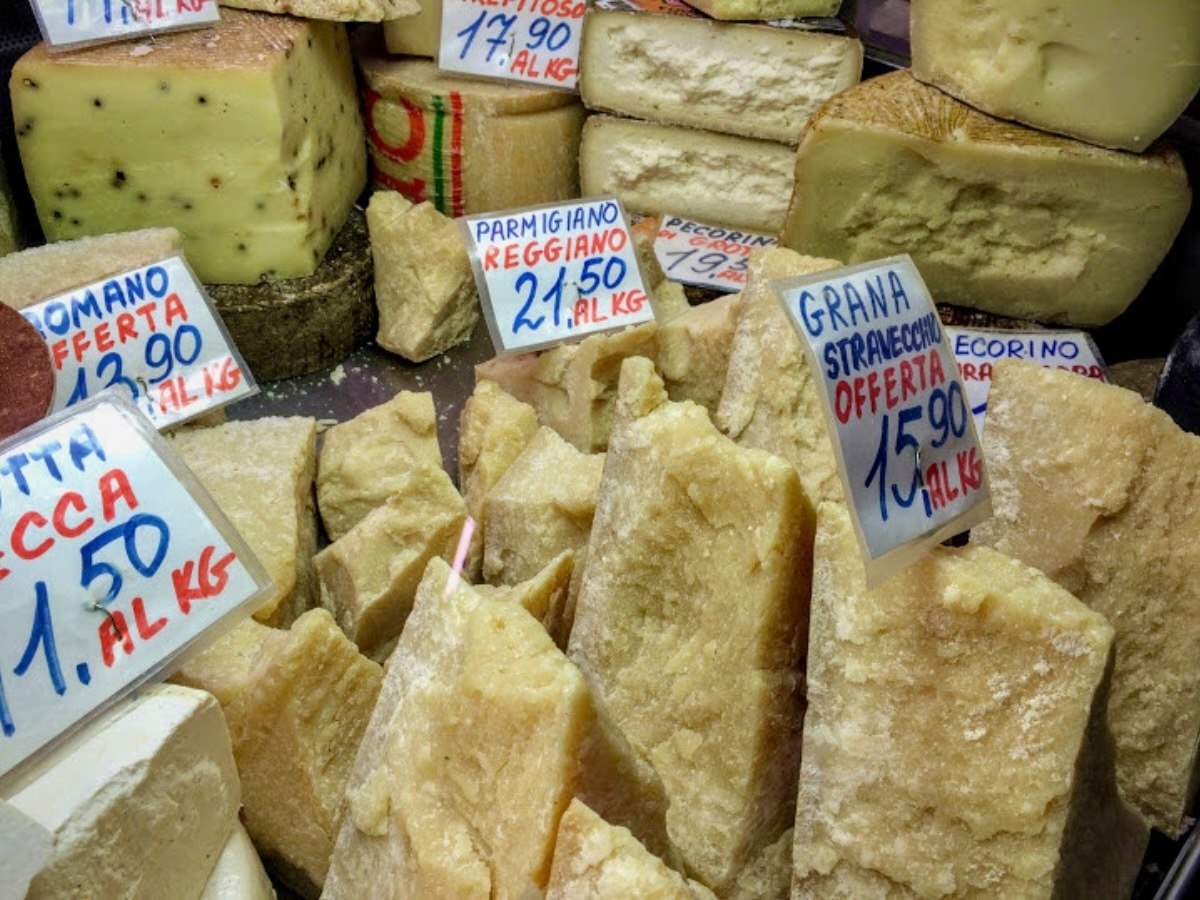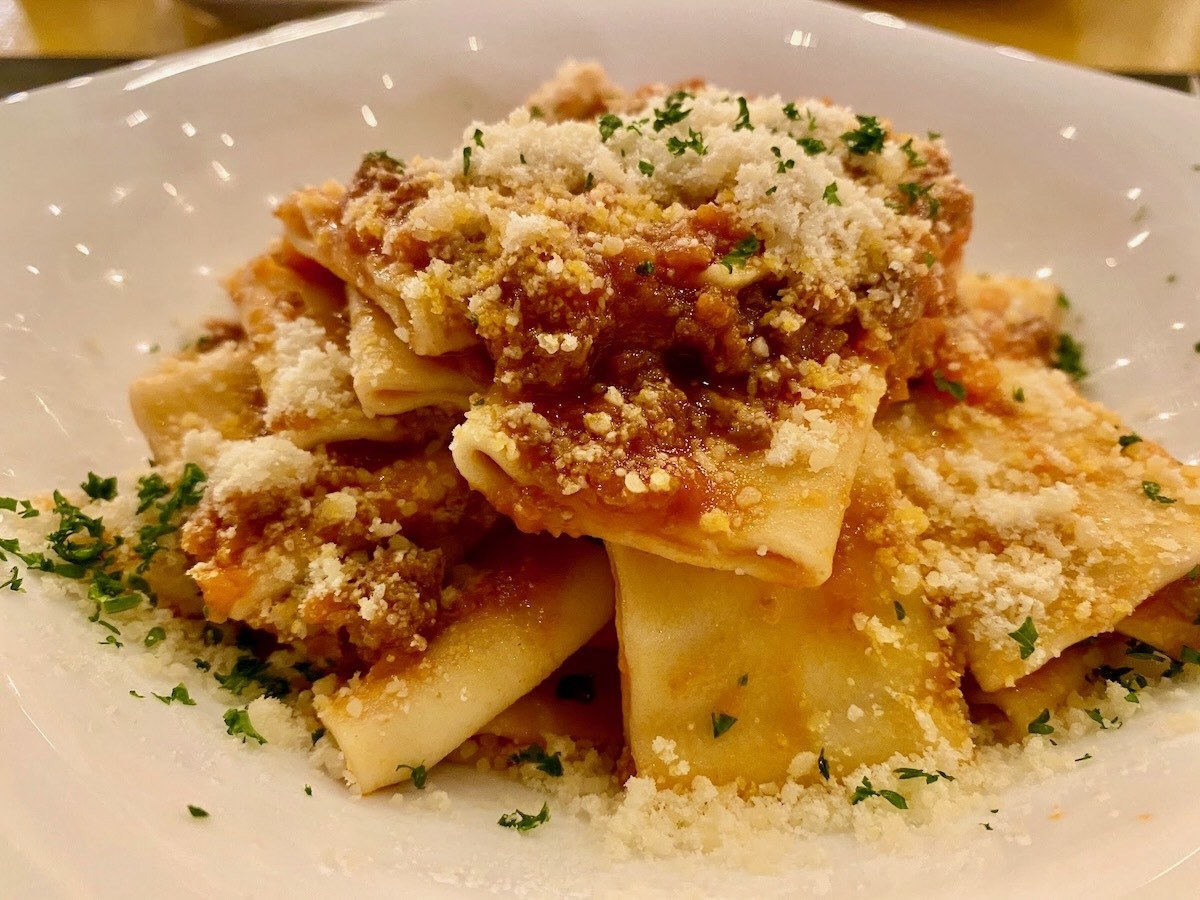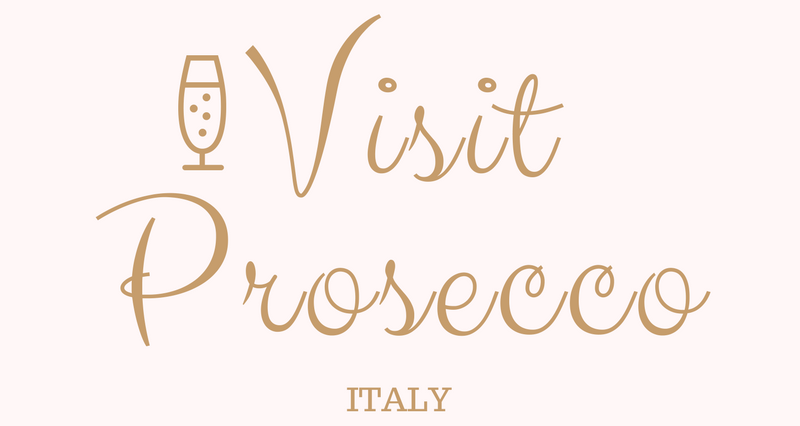Known as the King of Cheese, Parmesan is famous for its distinct flavour and cooking versatility. With a history over 900 years long, this northern Italian specialty has become one of the most popular cheeses around the world. In this guide, I’ll share everything you need to know about Parmesan cheese, including the difference between Parmigiano-Reggiano and Parmesan, its history, production, how to use it in cooking, how it compares to Gran Padano and Pecorino, and the best wines for pairing with Parmesan.

What is Parmesan cheese?
Parmesan is a hard cheese produced in Italy partly skimmed cow’s milk. Typically, it’s aged for at least 12 months which gives it the crunchy, granular texture we all love. It’s produced in large wheels with a hard rind. The cheese we buy is usually a small wedge cut from the wheel.
Related: 14 Types of Italian Cheese Everyone Needs To Know
Made by Italian Monks
Parmesan has a long history. It’s believed to have been first produced by Benedictine and Cistercian monks in the mid-13th century in the northern Italian region of Emilia-Romagna. The monks wanted a way to extend the shelf-life of large quantities of milk. Using milk from cows bred in the monasteries’ farms and salt from the Salsomaggiore salt mines they created a dry paste cheese which they set into large wheels.
The cheese gained popularity due to its long shelf-life, nutritional value, and versatility, and quickly spread to other regions of Italy throughout the Middle Ages.
It’s a protected cheese

In the 15th century, Parmesan cheese became immensely popular among the upper classes in Italy, leading to a substantial increase in production. By the 17th century, the Duke of Parma, Ranuccio I Farnese was worried about imitation Parmesan so he created a deed safeguarding the authenticity of the cheese. That deed specified the areas where Parma cheese could be produced, protecting it from fakes.
By the early 1900s, Parmesan cheese was becoming popular outside Italy and Europe. As exports increased, imitation products increased and it became a challenge to verify the cheese’s authenticity. Consumers wanted the real deal!
To manage this problem, the representatives of the Chambers of Commerce of four areas – Parma, Reggio Emilia, Modena, and Mantua – came together to find a way to protect the cheese produced in their provinces.
In 1954, a consortium was founded – the Consorzio del Parmigiano Reggiano. And, in 1955, Parmigiano-Reggiano was granted a European Protected Designation of Origin (PDO) status, meaning that to receive the Parmigiano-Reggiano label, the cheese can only be produced in specific regions of Italy following traditional methods.
Authentic Parmigiano Reggiano P.D.O. can now only be produced in a well-defined area of northern Italy; Parma, Reggio Emilia, Modena, Bologna (west of the Reno River), and Mantova (south of the Po River).
Did you know that in Italian Parmigiano means of the Parma region and Reggiano means of the Reggio Emilia region? Hence: Parmigiano-Reggiano.
DOC vs PDO protection
You may see some articles incorrectly refer to Parmigiano-Reggiano as having DOC status or protection. Like PDO, DOC is another geographical protection. However, DOC now just protects Italian wines like Prosecco, not food. I mention this not to be picky but to help you read labels. PDO is what you want to see on the label of your cheese, not DOC (denominazione di origine controllata). Related: How To Choose The Best Prosecco.
Parmesan vs Parmigiano-Reggiano
Something that confuses many of us is whether Parmesan is the same as Parmigiano-Reggiano. The answer is a bit complicated because of the long history of Parmesan and legal protections.
Parmagiano-Reggiano is the protected name of authentic Italian Parmesan, which had to be produced in specific regions of Italy following strict traditional methods to ensure its authenticity and superior taste. So, like Champagne from France, cheese can only have the Parmagiano-Reggiano label if it complies with the rules.
Until 2008, Parmesan was used as a more generic name for types of cheese similar to Parmagiano-Reggiano produced outside Italy without any production regulations. In other words, lower-quality imitations of the original.
However, in 2008, the European courts declared that only the cheese made in Italy following specific regulations could be called Parmesan. This means that the use of the word Parmesan became more strict. Within the EU, it can only be used for authentic Parmigiano-Reggiano and can’t be used for imitation Parmesan. So, within the European Union, Parmesan and Parmigiano-Reggiano mean the same thing.
What about the rest of the world? Many countries outside the EU followed suit after the court decision. One notable exception to this is the USA, which continues to use Parmesan for imitation products.
In the rest of this article, when I mention Parmesan, I mean the authentic Parmigiano-Reggiano not imitation Parmesan.
How is authentic Parmesan made?
Parmesan is made using the same nearly 1,000-year-old traditional method used by monks. Parmesan has three key ingredients; milk, salt, and rennet (an enzyme from the stomach of animals).
The Parmesan production process follows these steps:
- Fresh cow’s milk is added to a large copper boiler (sometimes with a natural whey starter)
- Rennet is added to help curdle the milk
- The resulting curd is broken into small granules using a special “spino” tool
- The mixture is slowly cooked and the curds sink to the bottom
- The curds are extracted from the whey, drained, and moulded to form wheels
- The wheels are immersed in brine (a solution of water and salt) for a few weeks to help enhance the flavour and preserve the cheese
- The wheels are left in a room to age for at least 12 months
Did you know? The average weight of a Parmesan wheel is 45.5kg/90lb and around 3,700,000 wheels are produced each year. Those wheels come from fewer than 3,000 dairies.
How long is it aged?
Standard PDO Parmigiano-Reggiano Parmesan must be aged for at least 12 months. However, most Italian producers will age the cheese for either 18-24 months, known as vecchio. If Parmigiano-Reggiano is aged 24-36 months it’s known as stravecchio. Ageing Parmesan for longer enhances the complexity and flavour of the cheese.
Most imitation Parmesan produced outside Europe is aged for as little as 10 months. This results in a much milder and milkier taste.
What does Parmesan taste like?
Parmesan has a robust and complex flavour profile. It’s nutty and slightly fruity, with a touch of saltiness. The cheese’s long ageing process contributes to its depth, resulting in rich umami undertones.
The bold, savoury notes are what make Parmesan such a popular and versatile ingredient. It adds flavour and depth, without overwhelming the taste of a dish.
The texture of Parmesan is grainy and crumbly, allowing it to melt easily into dishes while retaining its distinct character.
Other Italian hard cheeses

You probably won’t be too surprised to hear that Parmesan isn’t the only hard cheese produced in Italy. There is no shortage of hard salty cheeses made in the country, commonly used to sprinkle on top of pasta dishes or to add flavor to soups and sauces.
Parmigiano-Reggiano, Grana Padano, and Pecorino are three of the most popular Italian hard cheeses. But what are the key similarities and differences between them?
Parmigiano-Reggiano vs Grana Padano
Grana Padano is a hard cheese that’s made from cow’s milk and uses a similar production method to Parmigiano-Reggiano. And it has the same hard rind and grainy texture as Parmesan. But that is where the similarities end.
Gran Padano is generally aged for a shorter time than Parmesan. The taste tends to be slightly milder, creamier, and sweeter compared to Parmesan’s nutty and salty profile. For this reason, Grana Padano is often used in cooking, while Parmesan is better grated on top of a dish.
There are also less strict regulations governing the production of Gran Padano. The cheese can be produced in a larger area of northern Italy, in the Po River Valley. That is also why it tends to be cheaper than Parmesan.
Parmigiano-Reggiano vs Pecorino
Pecorino is another popular Italian hard cheese that looks similar to Parmesan and is often used for grating on dishes. But these cheeses also have their differences.
The main difference between Parmigiano-Reggiano and Pecorino is that the former is made using cow’s milk while the latter is made using sheep’s milk. In fact, the name Pecorino comes from the word “Pecora”, which means “sheep” in Italian.
Pecorino has a softer and creamier texture than Parmesan but with a saltier and tangier taste. As with most sheep’s cheeses, Pecorino also has earthy and grassy undertones. The taste is a little more overpowering than Parmesan.
Pecorino does not generally have a protected geographic designation, but several specific versions of Pecorino do have PDO status, including Pecorino Romano (the most internationally known) and Pecorino Sardo from Sardinia. Pecorino Romano is famous for its use in many Roman dishes, especially pasta sauces, such as carbonara and cacio e pepe.
Is Parmesan good for you?
You may be pleasantly surprised to hear that Parmesan is a highly nutritious cheese. Made with natural ingredients, it’s low in additives, synthetic preservatives and colours. It’s rich in calcium, proteins, lipids, phosphorus, and many essential vitamins such as vitamins A, B2, B12, and D. It’s also low in fat and cholesterol compared to other cheeses.
Thanks to its production method, Parmesan is also virtually lactose-free. As the cheese is left to age, the lactose becomes lactic acid. This makes it a great option for those with lactose intolerance or sensitivity.
On the downside, Parmesan is pretty high in calories. So, eating too much of it or eating it too often (easily done!) can lead to weight gain.
Is it unpasteurised?
To comply with the PDO rules, Parmagiano-Regginao is an unpasteurised cheese. Gran Padano and Pecorino are also unpasteurised. That means that the milk used to produce the cheese hasn’t first been pre-heated to kill any residual pathogens. The benefit of not pasteurising the milk is retaining the milk’s flavour. Eating unpasteurised milk is a hot topic and comes down to your personal health and approach to risk. If you’re not comfortable eating unpasteurised milk, find an imitation Parmesan produced in the USA where all cheese, by law, must be made using pasteurised milk.
Is it vegetarian?
One of the ingredients of authentic Parmesan is rennet, an enzyme that comes from the stomach of animals. Since Parmesan uses an animal part, it is not vegetarian. Gran Padano and Pecorino are made in a similar style and therefore aren’t typically vegetarian-friendly either. However, since Gran Padano and Pecorino aren’t so strictly protected by PDO, producers have more flexibility and can change their production process to leave out the rennet. You may, therefore, find Pecorino and Gran Padano that are vegetarian. Likewise, some imitation Parmesan can be vegetarian. Check the label.
How to use Parmesan

The most common way to eat Parmesan is to grate it over dishes like pasta, salads, pizza, risotto, soups, veggies, and more. The cheese is usually added to dishes immediately before serving or presented at the table for people to add to their meals themselves. That said, it’s great served as part of Italian aperitivo (a pre-dinner snack and drink)
In a restaurant, Parmesan may come already grated in a small bowl with a teaspoon for you to add to your dish. Or the waiter may grate the cheese onto your dish in front of you at the table.
If you’re hosting a dinner party and want to serve Parmesan for your guests, you can present it grated with a spoon or put a section of the cheese on a plate with a small cheese grater for guests to grate themselves.
You can also cut Parmesan into small chunks and serve it with fruits, nuts, and preserves on a cheese platter. A young Parmesan (aged 12-18 months) pairs best with fresh fruits and vegetables. While an aged Parmesan (24-36 months) goes best with dried fruits, nuts (walnuts and hazelnuts), and a drizzle of balsamic vinegar.
Parmesan should ideally be served at room temperature. So, remove it from the fridge at least an hour before you want to serve it. Chunks of Parmesan should be eaten with your hands rather than with cutlery due to the granular texture.
Popular Italian dishes using Parmesan
The most popular Italian dishes that use Parmesan cheese are:
- Melanzane alla Parmigiana – Fried eggplant baked in a dish with tomato sauce and Parmesan.
- Creamy Risotto – You really can’t beat a classic creamy risotto with mushrooms, garlic, and Parmesan.
- Gnocchi Alla Romana – Home made gnocchi using Parmesan.
- Fettuccine Alfredo – A simple creamy pasta using butter and Parmesan cheese (with garlic, cream, and salt added for the USA version).
Best wines to pair with Parmesan
Parmigiano-Reggiano is one of the most versatile Italian cheeses to pair with wine. It can be paired with red or white, still or sparkling, light or full-bodied. But which wines pair best with Parmesan cheese?
Prosecco. Not that I’m biased, but Parmesan and Prosecco are a perfect pairing. The delicate bubbles of Prosecco help cut through the saltiness of the hard cheese, while the sharp saltiness of the cheese offers a delicious contrast to the sweetness of the sparkling wine. Parmesan pairs especially well with Prosecco Brut or Extra Brut. You might also like my Prosecco Wine Guide.
Full-bodied red wine. Aged Parmesans (24-36 months) pair nicely with fruity full-bodied reds such as Chianti Classico DOCG, Amarone della Valpolicella, Malbec, and Syrah. The bold complex flavours of these wines perfectly complement the bold complex flavours of aged Parmesan, while the fruity notes of the wine help bring out the subtle fruity notes of the cheese.
Medium-bodied white wines. Younger Parmesans tend to pair best with crisp light to medium-bodied whites such as Sauvignon Blanc or Riesling. The fresh and fruity notes of these wines help to balance out Parmesan’s saltiness.
It’s a great cheese to serve as an accompaniment to an at home wine tasting (adding some food with help avoid a hangover, though adding some parmesan to a light pasta is a good hangover food in itself).
Related: 14 Famous Italian Drinks
How to store
Properly storing Parmesan cheese is crucial to maintain its quality. Keep the cheese wrapped tightly in plastic wrap or aluminium foil, expelling air to prevent moisture. Place the wrapped cheese in an airtight container or resealable plastic bag to further protect it against moisture and odours from other foods.
Then, store in the refrigerator at temperatures between 35°F to 40°F (1.7°C to 4.4°C).
If mould appears on the surface of the cheese, you can trim it and continue using the unaffected portions. You can also freeze Parmesan to help it last for several months. Make sure to grate or slice it before freezing for convenience. You should allow the cheese to return to room temperature before using it to enjoy its full flavour and texture.
So, that’s my guide to Parmesan cheese. Drop any questions below.
